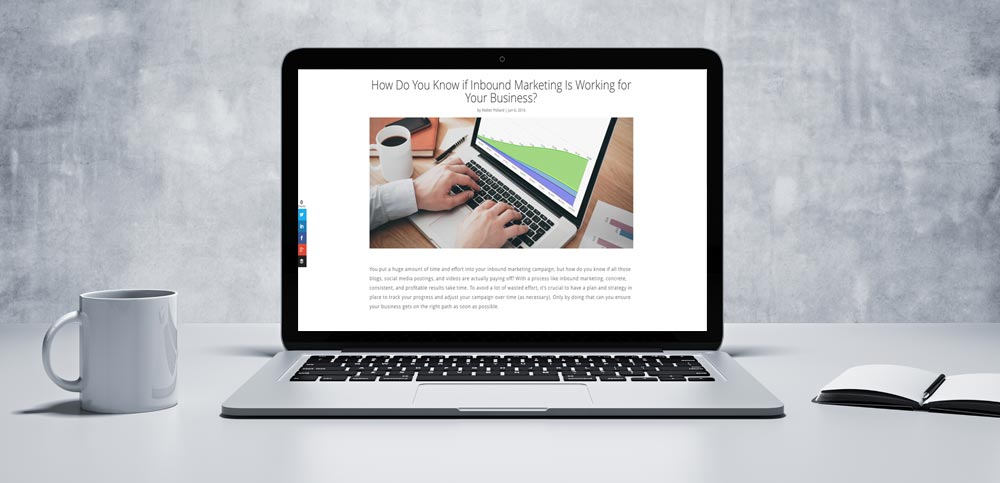
Agency Sales Enablement Services: Enhances Inbound Marketing Agencies
As any inbound marketing agency knows, a full inbound program involves a full spectrum of change within a company. When implemented to its greatest effect, though, inbound marketing facilitates both the marketing and sales teams. Therefore, one way for an agency to maximize its effectiveness is by offering sales enablement services. What are the benefits of these services, and why should you give special consideration to employing these tactics in your agency? Read on for all the benefits and positive consequences of investing in sales enablement.
Why Inbound Marketing Agencies Should Offer Sales Enablement Services
The Bottom Line: Sales Enablement Helps Inbound Marketing Agencies Increase Profits
There are lots of qualitative reasons for agencies to invest in sales enablement, but there are also quantitative reasons. After all, sales enablement is all about implementing methods and tactics that maximize the productivity of the sales team. When that happens, revenues increase, and your agency is simply more likely to retain (and increase) retainers by keeping clients longer.
Sales enablement is one of many ways to help manage leads better, and that directly relates to closing more deals and increasing profits.
How Sales Enablement Bridges the Gap between Sales and Marketing
While salespeople have traditionally thought of themselves as a somewhat separate group, inbound marketing illustrates that any lack of alignment between marketing and sales teams is a surefire way to be less effective with that inbound campaign.
Therefore, if your agency can demonstrate that they bridge this existing gap, your clients are more likely to see greater success, better results, and increased profits.
Inbound marketing—when it incorporates proper sales enablement—allows sales and marketing to work collaboratively and pull from their communal knowledge base to better address the concerns of leads, educate their potential customers, and provide value through strategically devised content.
This collaboration should permeate every aspect of the inbound campaigns, from the initial strategy that goes into identifying buyer personas to the creation of the actual content and sales collateral. The two groups should even work together to determine the parameters of their lead-qualifying system, so everyone is on the same page as to when a lead should be handed from one group to the next and successfully taken through the sales cycle.
If your agency does this consistently for your clients, you have a much greater chance of finding long-term success with those clients.
1. Sales enablement Facilitates Sales Buy-In
Inbound marketing and its collaborative techniques only work if you have total buy-in from every group involved. If marketing doesn’t believe in the power of the campaign being initiated, that campaign is put at a serious disadvantage. By the same token, sales needs to also be fully invested in all inbound efforts.
Because sales has traditionally been somewhat separate from marketing, it’s perhaps even more important to ensure you get that buy-in from the sales members. Focusing on sales enablement—that is, making it a priority to facilitate the sales team reaching its goals—is one essential way to accomplish that.
2. Align Content Strategies with Markeitng and Sales
With sales buy-in its imperative that you have them involved in the content strategy process. Especially when it comes to creating buyer personas and specific content for sales.
Sales is the front-facing side of any business and they have valuable insight into prospective customers challenges, needs, desires and roles.
Sales input will provide you much better results when developing a content strategy, developing buyer personas for different stages of the buyers journey and creating effective sales collateral.
3. Incorporate Technology into Your Sales Enablement Efforts
Another important way to demonstrate to your clients that you give sales enablement its proper emphasis is by utilizing the technology that is best going to aid sales teams.
One essential tool is a CRM, and as an agency, it’s important to walk all your clients through how to maximize this powerful software.
Failing to harness technology for your clients can lead to inefficiencies and lessened success with the campaigns. To get the most out of you and your clients’ inbound efforts, the relevant technologies should play roles in the campaigns from the outset.
4. Provide Coaching and Training throughout the Inbound Marketing Campaign
Inbound marketing can mean a lot of changes for a company. Genuine collaboration between marketing and sales might be a somewhat foreign concept. The technologies to streamline inbound efforts might also seem unfamiliar.
Whatever aspect your client needs a helping hand with, a successful agency will be there to answer questions, provide guidance, and offer any coaching or training necessary to make inbound marketing make sense and work for that particular client.
Receive a Free Inbound Marketing and Inbound Sales Assessment






Recent Comments